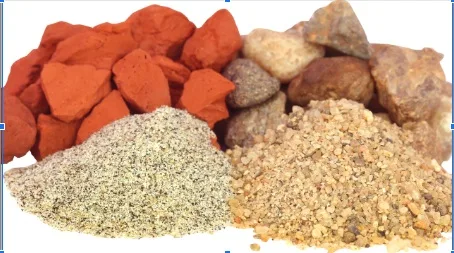Aggregate materials play a crucial role in construction and infrastructure development. They form the foundation of buildings, roads, and various structures. Understanding the different types of aggregate materials and their specific applications is essential for anyone involved in the construction industry.
In this blog, we will delve into the five main types of aggregate materials, highlighting their characteristics and uses.
1. Crushed Stone
Crushed stone is one of the most common types of aggregate materials. It is made by crushing larger rocks and stones into smaller pieces. The resulting material is angular and varies in size, ranging from fine dust to larger stones. Crushed stone is widely used in road construction, as a base for concrete and asphalt, and in drainage systems. Its durability and versatility make it a preferred choice for many construction projects.
2. Sand
Sand, another widely used aggregate material, is composed of small grains of rock and minerals. It is available in various forms, including natural sand, manufactured sand, and specialty sand. Sand is primarily used in the production of concrete and mortar. It provides bulk, strength, and cohesiveness to these mixtures. Additionally, sand is used in landscaping, as a base for pavers, and in the creation of sports fields and golf courses.
3. Gravel
Gravel consists of rounded or angular rock fragments, typically larger than sand but smaller than crushed stone. It is versatile and finds application in a wide range of construction projects. Gravel is commonly used in road construction, as a drainage medium, and in the production of concrete. It can also be used for decorative purposes, such as in pathways or garden features. Its availability in different sizes and colors makes it a popular choice for landscaping projects.
4. Recycled Concrete Aggregate
As sustainability becomes increasingly important, the use of recycled materials gains significance. Recycled concrete aggregate (RCA) is obtained from the demolition of existing concrete structures and subsequent processing. RCA retains the properties of natural aggregates and can be used as a replacement for virgin aggregates in various applications. It is often utilized in road construction, as a base material, and in the production of new concrete.
5. Slag Aggregates
Slag aggregates are a byproduct of metal smelting processes. They are formed when the molten slag, a waste material, is rapidly cooled. Slag aggregates possess excellent hardness and durability properties. They are commonly used in road construction, as a base or surface material. Slag aggregates can also be used in the production of asphalt, concrete, and embankments. Their widespread availability and cost-effectiveness make them an attractive choice for many construction projects.
Conclusion
Understanding the different types of aggregate materials is essential for anyone working in the construction industry. Whether it’s crushed stone, sand, gravel, recycled concrete aggregate, or slag aggregates, each type has its unique properties and applications. By selecting the right aggregate material, construction professionals can ensure the durability, strength, and longevity of their projects. To find the best aggregate equipment for your needs, consider exploring options like ProTrack, which offers a wide range of reliable and efficient machinery designed to handle various aggregate materials.

